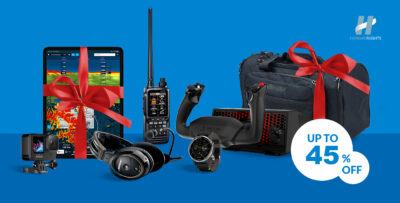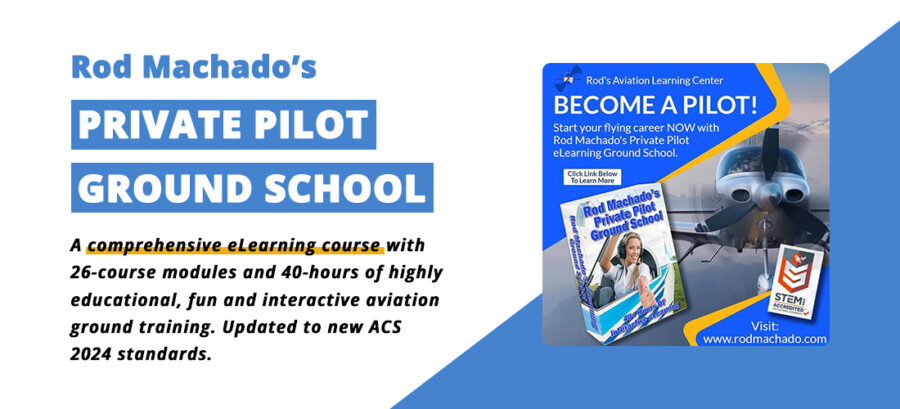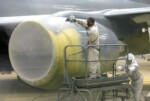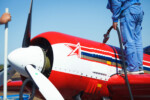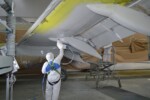What is the Easiest Airplane to Learn to Fly?
9 November 2023 | Updated on February 05, 2024
When it comes to determining the easiest airplane to learn to fly, there are several factors to consider. These include the overall ease of handling, stability, forgiveness of errors, and recommendations from experienced pilots. While there is no universal checklist, certain aircraft have a reputation for being beginner-friendly. In this article, we will explore the top options for the easiest airplanes to fly, based on these criteria.
The Beechcraft Skipper
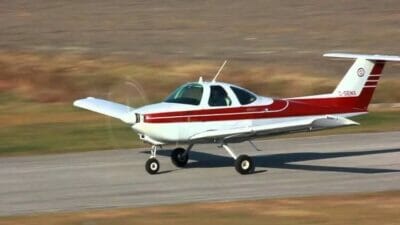
The Beechcraft Skipper is a popular choice for pilots looking for an easy-to-fly aircraft. This low-wing trainer aircraft is known for its user-friendly characteristics and forgiving flight performance. Its design provides excellent side visibility, making it easier for pilots to maintain situational awareness during flight.
The Beechcraft Skipper features a t-tail configuration, which enhances stability and control. This design allows for smoother maneuvers and reduces the likelihood of stalls and spins. The aircraft’s sloped nose design also improves forward visibility during climb, ensuring a clear view of the flight path.
Key features and benefits of the Beechcraft Skipper:
- Low-wing configuration
- T-tail design
- Excellent side visibility
- Sloped nose for better forward visibility
It’s important to note that while the Beechcraft Skipper is considered easy to fly, some flight instructors have expressed concerns that its ease of operation may not provide enough training opportunities for student pilots. It’s always essential to balance the ease of handling with the need for comprehensive training to develop well-rounded piloting skills.
Despite being out of production, the Beechcraft Skipper remains a favorite among pilots who are seeking an aircraft that is both easy to fly and enjoyable to operate.
The Champion Citabria 7ECA
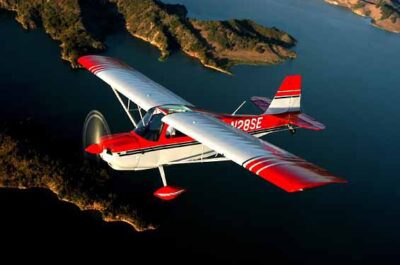
The Champion Citabria 7ECA is a versatile aircraft designed for both primary flight training and acrobatic training. Its forgiving flight characteristics and robust construction make it an excellent choice for student pilots who are looking for a beginner-friendly aircraft.
The Citabria 7ECA is known for its ability to handle positive and negative G-forces, meeting rigorous force loading standards. This makes it a suitable aircraft for pilots who want to explore aerobatics and learn advanced maneuvers. The forgiving flight characteristics of the Citabria make it easier for student pilots to recover from stalls and other flight mistakes.
In addition to its acrobatic capabilities, the Citabria 7ECA offers stability and ease of handling, making it an ideal aircraft for primary flight training. Its low-wing configuration provides a unique flying experience and enhances flight visibility, allowing student pilots to develop their skills with confidence.
Key features and benefits of Champion Citabria:
- Forgiving flight characteristics
- Acrobatic training capabilities
- Stability and ease of handling
- Low-wing configuration for enhanced flight visibility
The Champion Citabria 7ECA is a popular choice among student pilots who want to experience the thrill of aerobatics while also building a strong foundation in flight training. Its forgiving nature and versatile design make it a reliable and enjoyable aircraft for pilots of all skill levels.
The Piper Cherokee Cruiser 140 PA-28-140
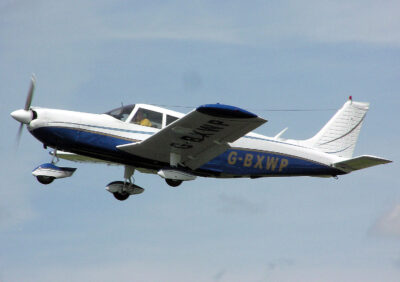

The Piper Cherokee Cruiser 140 PA-28-140 is a highly regarded aircraft known for its low-wing design and easy handling. With its stable flight characteristics and simplistic controls, it is often considered one of the easiest airplanes to fly, making it an excellent choice for student pilots.
The low-wing configuration of the Piper Cherokee Cruiser 140 provides increased stability, making it more forgiving during flight. This design also allows for better visibility, enhancing situational awareness for pilots. Whether it’s taxiing, taking off, or landing, the Cherokee Cruiser 140 offers a smooth and effortless flying experience.
The Piper Cherokee Cruiser 140 is often described as “too simple” for a training aircraft, according to flight instructors. Its easy handling and straightforward operation make it a reliable and beginner-friendly option for aspiring pilots.
In addition to its user-friendly characteristics, the Piper Cherokee Cruiser 140 is known for its reliability and durability. This aircraft has a proven track record, and its popularity among flight schools and aviation enthusiasts speaks volumes about its performance and safety. Student pilots can trust in the Piper Cherokee Cruiser 140 to provide a comfortable and enjoyable flying experience.
Key features and benefits of the Piper Cherokee:
- Low-wing design: Enhanced stability and visibility
- Easy handling: smooth and effortless flying
- Reliability: Proven performance and safety
If you’re a student pilot looking for an easy-to-fly airplane, the Piper Cherokee Cruiser 140 PA-28-140 is a fantastic choice. Its low-wing design, easy handling, and overall reliability make it a top contender in the search for the easiest airplane to learn to fly.
The Cessna 150/152
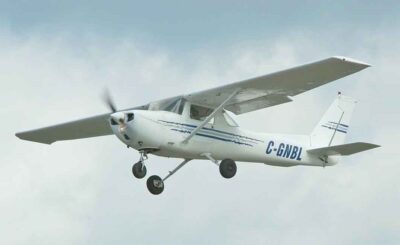

The Cessna 150/152 is a classic choice for beginner pilots. With its tricycle gear configuration, it offers improved ground visibility and easier landings. The forgiving flight characteristics of the Cessna 150/152 make it an ideal aircraft for student pilots. In fact, it is known for its slightly pronounced stall, allowing pilots to react and correct before entering a full stall, which enhances safety and confidence in the air.
Not only is the Cessna 150/152 easy to handle, but it is also widely used for flight training purposes. Flight schools across the country rely on this aircraft to teach aspiring pilots the fundamentals of flying. Its popularity among flight instructors and students alike speaks to its reputation as one of the easiest planes to learn to fly.
With its rich history and widespread use, the Cessna 150/152 has become a familiar and trusted aircraft in the aviation community. Its tricycle gear and forgiving flight characteristics make it an excellent choice for student pilots looking to embark on their flying journey with confidence and ease.
Key features and benefits of the Cessna 150/152:
- Trycile gear: Improved ground visibility and easier landings
- Forgiving flight characteristics: Enhanced safety and confidence for student pilots
- Widely used for flight training: Proven reliability and trusted performance
The Cessna 172 Skyhawk
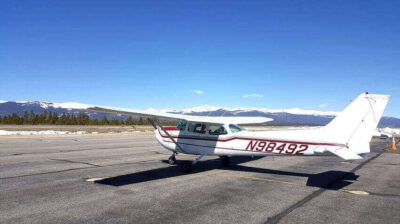

The Cessna 172 Skyhawk is a popular trainer aircraft known for its familiarity and ease of flying. With its four-seat configuration, it provides ample space for student pilots and instructors alike. The Skyhawk is highly praised for its stability, forgiving flight characteristics, and overall ease of handling, making it an ideal choice for beginner pilots.
Flight schools and instructors often recommend the Cessna 172 Skyhawk due to its widespread use in training programs. Its reliability and predictable performance help build confidence in student pilots, allowing them to focus on learning and developing their flying skills.
One of the key advantages of the Skyhawk is its familiarity. Since it is widely used in aviation training, transitioning from the simulator to the actual aircraft is seamless. Many student pilots find comfort in the fact that countless pilots before them have successfully learned to fly using the Cessna 172 Skyhawk.
Key features and benefits of the Cessna 172:
- Stability: The Cessna 172 Skyhawk is known for its stable flight characteristics, providing a smooth and controlled flying experience.
- Ease of Handling: The aircraft’s controls are intuitive and responsive, making it easy for student pilots to learn and maneuver.
- Forgiving Flight Characteristics: The Skyhawk’s forgiving nature allows student pilots to make mistakes and learn from them without compromising safety.
- Ample Space: With room for four occupants, the Skyhawk offers a comfortable learning environment for both student pilots and instructors.
In summary, the Cessna 172 Skyhawk is a popular and familiar trainer aircraft that offers a stable and easy-to-fly experience for student pilots. Its forgiving flight characteristics and spacious cabin make it an excellent choice for those starting their flying journey. Whether it’s learning the basics or building upon existing skills, the Cessna 172 Skyhawk continues to be a reliable and highly regarded aircraft in the aviation community.
The Diamond DA20 Katana
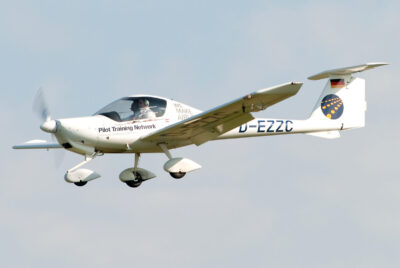

The Diamond DA20 Katana is a beginner-friendly aircraft known for its composite design and responsive controls. It offers a modern and fuel-efficient alternative to traditional metal planes, making it a popular choice among student pilots. With its low-wing configuration, the Katana provides excellent visibility and a smooth flying experience.
The responsive controls of the Diamond DA20 Katana make it easy to maneuver, allowing student pilots to develop their skills with confidence. Its composite construction combines strength and lightness, resulting in improved performance and fuel economy. The Katana is designed to be forgiving, allowing pilots to learn from their mistakes and build their flying abilities.
The Diamond DA20 Katana is a popular choice for flight schools due to its modern avionics and forward-thinking design. Its composite construction and responsive controls make it a great option for student pilots looking for an easy-to-fly and enjoyable aircraft.
Whether you’re a beginner pilot or an experienced aviator, the Diamond DA20 Katana offers a unique and enjoyable flying experience. Its composite design, responsive controls, and modern avionics make it a standout choice for those looking for a beginner-friendly aircraft.
Conclusion
After considering factors such as ease of handling, stability, forgiveness of errors, and recommendations from experienced pilots, it is clear that there are several beginner-friendly aircraft that stand out as the easiest to fly. The Beechcraft Skipper, Champion Citabria 7ECA, Piper Cherokee Cruiser 140 PA-28-140, Cessna 150/152, Cessna 172S Skyhawk, and Diamond DA20 Katana all offer unique features and flight characteristics that make them ideal for novice pilots.
While the Beechcraft Skipper may not provide enough training opportunities for student pilots, it remains an easy-to-fly aircraft for those with some experience. The Champion Citabria 7ECA, on the other hand, is not only great for primary flight training but also for acrobatic training, thanks to its forgiving flight characteristics. However, its taildragger design may offer some additional challenges.
The Piper Cherokee Cruiser 140 PA-28-140 is known for its stability and ease of handling, making it a reliable choice for students. The Cessna 150/152, with its tricycle gear and forgiving flight characteristics, is a classic choice widely used for flight training. The Cessna 172S Skyhawk, a popular trainer aircraft, offers familiarity and ease of handling, making it a recommended option for beginner pilots.
Lastly, the Diamond DA20 Katana, with its composite design and responsive controls, provides a modern and enjoyable flying experience. Ultimately, the choice of the easiest airplane to learn to fly depends on personal preferences and learning styles, but these aircraft offer great options for student pilots embarking on their flying journey.
FAQ
What factors should I consider when choosing the easiest airplane to learn to fly?
Factors to consider include overall ease of handling, stability, forgiveness of errors, and recommendations from experienced pilots.
Is there a universal checklist for determining the easiest airplane to fly?
No, there is no universal checklist. However, certain aircraft have a reputation for being beginner-friendly.
How many Beechcraft Skippers were built, and is it still in production?
Only 312 Beechcraft Skippers were built, and it is no longer in production.
What are the flight characteristics of the Champion Citabria 7ECA?
The Champion Citabria 7ECA is versatile and designed for both primary flight and acrobatic training. It is forgiving of hard landings and stable in windy conditions.
What makes the Piper Cherokee Cruiser 140 PA-28-140 easy to handle?
The Piper Cherokee Cruiser 140 PA-28-140 is known for its stability, ease of handling, and simplicity of landing, according to flight instructors.
What are the flight characteristics of the Cessna 150/152?
The Cessna 150/152 series is forgiving with slightly pronounced stalls, allowing pilots to react and correct before entering a full stall. The tricycle gear configuration also makes it easier to land and provides better ground visibility.
Why is the Cessna 172S Skyhawk recommended for beginner pilots?
The Cessna 172S Skyhawk is highly praised for its stability, ease of handling, and forgiving flight characteristics. Its familiarity and widespread use in flight schools make it a reliable choice for student pilots.
What are the features of the Diamond DA20 Katana?
The Diamond DA20 Katana features a composite design, making it lighter and more fuel-efficient. It offers excellent visibility and responsive controls, making it a popular choice for student pilots.
What are the standout options for beginner pilots when choosing the easiest airplane to learn to fly?
The standout options include the Beechcraft Skipper, Champion Citabria 7ECA, Piper Cherokee Cruiser 140 PA-28-140, Cessna 150/152, Cessna 172S Skyhawk, and Diamond DA20 Katana.








